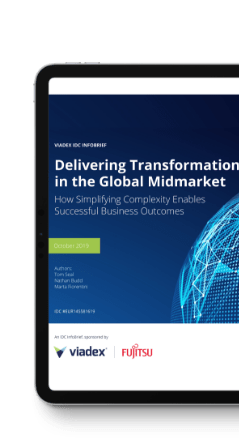Counting the Costs: Unveiling the Toll of Erratic Device Lifecycles on Global Businesses

In the intricate web of global business operations, the seamless functioning of devices stands as a cornerstone of productivity and efficiency. Across diverse locations and time zones, the repercussions of a malfunctioning device’s lifecycle are far-reaching. We unpack at a very high level the cost implications that ensue from device-related challenges. We explore the pain points of downtime, sluggish response, and inconsistent support, analyze the comprehensive consequences of lost productivity across multiple teams, and highlight strategic solutions that ensure optimal device management, addressing user needs and boosting confidence across the board.
Think about it as a Ripple Effect, that gains momentum as the ripple spreads which in businesses that have a global footprint is indicative of a massive risk.
- Impact of Downtime: Time waits for no one, and in a global business with multiple locations, downtime becomes an unwelcome guest affecting teams across various time zones. Downtime experienced in one region can halt collaborative efforts, causing delays in projects and disrupting the momentum of work across other locations.
- Sluggish Response and Support: Slow device performance and erratic support are universal frustrations. The delay in accessing critical information and applications can hinder decision-making, put business contracts at risk, create inefficiencies across time zones and impact cross-functional collaboration with both internal and external stakeholders.
The far-reaching consequences of device inefficiencies extend to several teams, each grappling with its own set of challenges creating a multi-dimensional loss of productivity:
- IT Team: Increased workload due to frequent troubleshooting, leading to reduced focus on strategic projects and innovations.
- Human Resources: Strained by frequent complaints and downtime-related stress, impacting employee morale and engagement.
- Operations: Delayed projects and slower workflows impede business processes, affecting supply chain management and customer service.
- Users: Frustration and diminished motivation stemming from constant device issues, hampering job satisfaction and overall productivity.
- Customers: The impact to customers working with a supplier that is unable to deliver consistent output, puts contracts at risk.
The impact very obviously becomes more than just a call to your IT team. To further compound the impact to the business, we know that as devices get older, their downtime increases which has the potential based on industry downtime standards of 5X costs in year 2 and 13X costs in year 3. Not linked to economic inflation. Not linked to contractual inflation – just impacting your bottom line.
Without just dwelling on the risk, we have to highlight what a different approach looks like:
- User-Centric Approach: Begin with understanding user needs, from intensive users requiring high-performance devices to those with low-intensity tasks. Tailor device specifications accordingly to optimize user experience.
- Proactive Monitoring: Employ remote monitoring tools to identify and address device issues before they escalate. This approach minimizes downtime and prevents productivity losses.
- Global Support Network: Collaborate with an IT partner that provides 24/7 multi-lingual global support. This ensures timely assistance regardless of time zones, reducing downtime and its associated costs.
- Predictive Analytics: Leverage data analytics to predict device failures. Identifying issues in advance allows for preventive maintenance, avoiding disruptions and associated productivity losses.
- Scheduled Upgrades and Refresh Cycles: Plan upgrades and refreshes strategically to minimize interruptions. Regularly scheduled upgrades keep devices up-to-date and capable of handling evolving tasks.
- Training and Empowerment: Educate users about efficient device usage. Empowered users are better equipped to optimize their work processes, enhancing overall productivity.
By prioritizing comprehensive device management, businesses can transform the landscape, restore confidence and positively impact productivity:
- Operational Efficiency: A seamless device experience translates to smoother workflows, faster decision-making, and improved operational efficiency.
- User Confidence: Users gain confidence in their workspace and the company when their devices operate optimally. This confidence leads to enhanced job satisfaction, higher morale and staff retention.
- Cost Savings: Avoiding the costs of downtime across the businesses skillset, inefficient support, and lost productivity contributes to substantial cost savings over time.
In a globally connected business world, the repercussions of a broken device lifecycle resonate deeply across teams, locations, and time zones. The pains of downtime, slow response, and inconsistent support echo through productivity losses and operational inefficiencies. Yet, by adopting a strategic approach that aligns device management with user needs, these challenges can be mitigated. The impact of well-managed devices extends far beyond operational efficiency; it instils confidence in employees, enhances user experience, and ultimately, positions the company as a formidable player in a competitive landscape.




